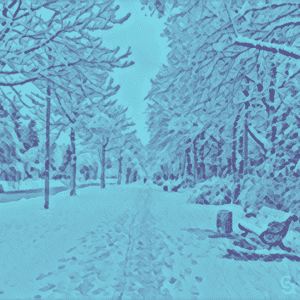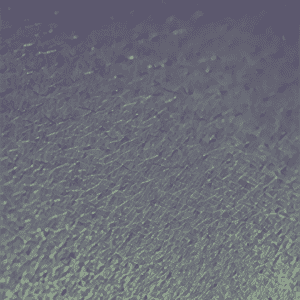 Like at least 10 million other Americans, I suffer from Seasonal Affective Disorder (SAD), a type of depression that’s related to changes in seasons. My symptoms start in the autumn and continue into the winter months, sapping my energy and making me more irritable.
Like at least 10 million other Americans, I suffer from Seasonal Affective Disorder (SAD), a type of depression that’s related to changes in seasons. My symptoms start in the autumn and continue into the winter months, sapping my energy and making me more irritable.
Fortunately, these symptoms resolve during the spring and summer months. I have tried most of the usual treatments—lights, medication, and cognitive behavioral therapy—but, to be honest, none of them ever really helped. The only recommended treatment that seemed to make a difference for me was going for walks every day no matter the weather. I learned to relish walking in the rain and even in the middle of storms. However, it was only when I discovered the freedom of thinking outside the box and applied my creativity to my seasonal practices that I started to see more dramatic changes.
First, I celebrate Advent, but I begin early. November 15th marks the beginning of Celtic Advent, a season I started celebrating a few years ago when I embraced this 40 days of preparation for Christmas. Orthodox Christians also celebrate a 40-day Advent, but what I love about Celtic Advent is that there are no proscribed practices to follow, and I can give full reign to my creativity and imagination.
What I find most energizing is the creation of a contemplative garden for the season. This is a very spiritual process that encourages me to dream, inviting the Holy Spirit to direct my dreaming. I wander my house and garden to gather significant items and small plants to incorporate in my garden. The creation step is always a fun and often protracted one. My garden tends to change and morph over the time I use it for meditation. New thoughts, ideas, and inspiration prompt the addition of new elements that draw me closer to the heart of God. The last step will be letting go. When the season for which I created the garden ends, I find release and freedom in dismantling what I created.
My Celtic garden replaced one that sat on my desk during autumn. I used the same beautiful clam shell as its base but most of the elements are new. Many are items I collected on Iona during my last visit—some distinctive rocks, a few strands of lamb’s wool, a dried piece of kelp. At the back of the garden is a delicate coral frond that reminds me of a winter tree, denuded of leaves but revealing the beautiful skeleton of the tree beneath. Its inclusion comes from asking myself: “What do I grieve as the autumn leaves fall and I let go of the beauty of this passing season? What do I look forward to as winter approaches?”
One thing I always rejoice in on my winter walks is the breathtaking beauty of the branches that it reveals. These beautiful tree skeletons only appear for a few short months, but they are worth the loss of the autumn colors to be able to appreciate their full glory. Beside the garden stands one of my Celtic crosses. It is embellished with scenes from the Bible, and the original cross would have been a site of learning. I incorporated this to remind myself that Advent is a season of learning and I need to pay attention to all the stories I hear during this season.
My new garden combines well with my second practice, which I established a couple of weeks ago, as my early morning devotional time was increasingly spent in the dark. I sit in the dark for a few minutes, take some deep breaths in and out to focus on the presence of God, then I recite this prayer adapted from John 1:4,5:
God, it is dark, but in you there is always light.
Christ is the light of the world,
and his life brought light to everyone.
His light shines in the darkness,
And the darkness will never extinguish it.
Then I light the candles in my circle of light. Most of them are battery-operated, but I always end with lighting a real candle. It stands just behind my new garden. As the winter solstice—the shortest day of the year—approaches, I tend to light more real candles and will definitely add some to my garden so that by Christmas time it is a blaze of light.
I then sit in silent meditation for several minutes. At the end of my time, as the sun slowly adds natural light to my world, I recite another prayer:
God, I thank you for your light
that gives light not just to everyone,
but to every part of creation.
I thank you that you are present,
in all things, around all things,
shining through all things.
These kinds of rituals really enrich my life and my faith and help me overcome SAD. As Christmas approaches, I search for more rituals to strengthen the meaning of the season. A Blue Christmas celebration, which in the Northern hemisphere coincides with the winter solstice, is also very important for me. People are grieving—the loss of loved ones from COVID and other causes, the loss of property from hurricanes and floods, the loss of economic security, and growing hunger. Deep within myself, there is an ever-present grief for the destruction of creation and its impact on all our lives. These griefs add to the symptoms of SAD. I particularly love some of the practices that my friend Mark Pierson in New Zealand shared with me—an arrangement of empty chairs to commemorate those we have lost, or using zip ties and barbed wire to represent our grief for the abandoned and despised in our world who lack justice. I like to end such celebrations on a note of hope. This year I am toying with creating birdseed wreaths for the birds that flitter around our garden, as part of my Blue Christmas remembrances. The birds are an ever-present sign of hope for me.
Another fun ritual for this season is preparing for Christmas festivities. I soak the fruit for my very English fruitcake at the beginning of November, then make an array of shortbread, chocolate cookies, and savory cheese balls as the season progresses. I love to cook all kinds of goodies at this season. I also love to eat them and, more than anything, to share them with others. We used to hold a Christmas open house each year, but my husband and I are still not comfortable with large gatherings, so will send a lot of the goodies to friends and relatives in other parts of the country and world. That, too, is part of what I delight in during this season. And it certainly relieves my depression.
I encourage you to allow your liturgical rebel to surface as we head toward Christmas. Spend time in prayer, allowing the Holy Spirit to guide you. Be willing to let go and create something new. I think you, too, will be inspired by how much it enriches your faith and draws you close to God.
 Christine Aroney-Sine co-founded (with her husband, Tom) Mustard Seed Associates, a network of followers of Jesus that seeks to unleash the creative potential of Jesus followers. She writes books about and conducts seminars on sustainability, simplicity, spirituality, and gardening.
Christine Aroney-Sine co-founded (with her husband, Tom) Mustard Seed Associates, a network of followers of Jesus that seeks to unleash the creative potential of Jesus followers. She writes books about and conducts seminars on sustainability, simplicity, spirituality, and gardening.


